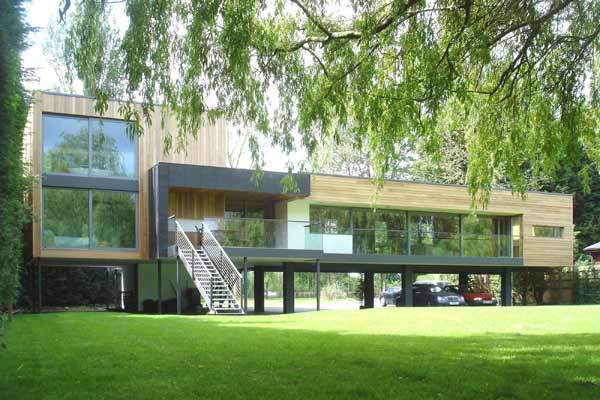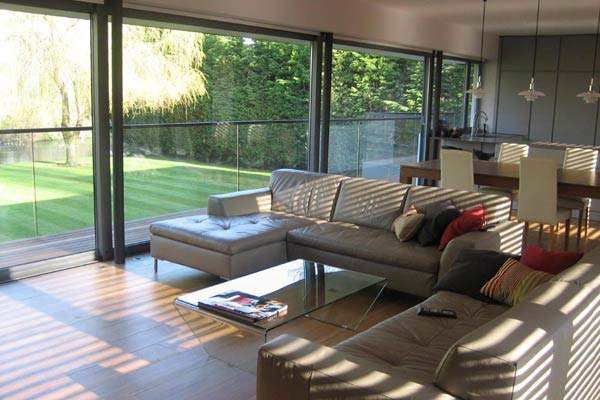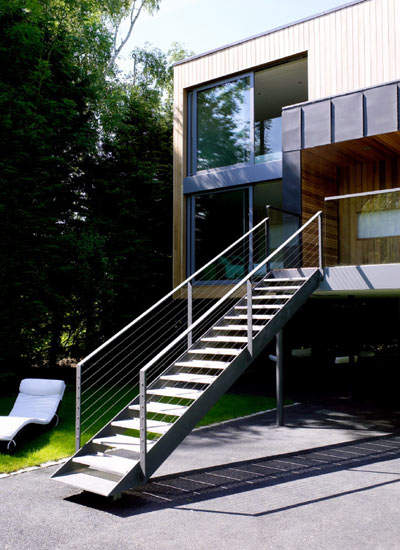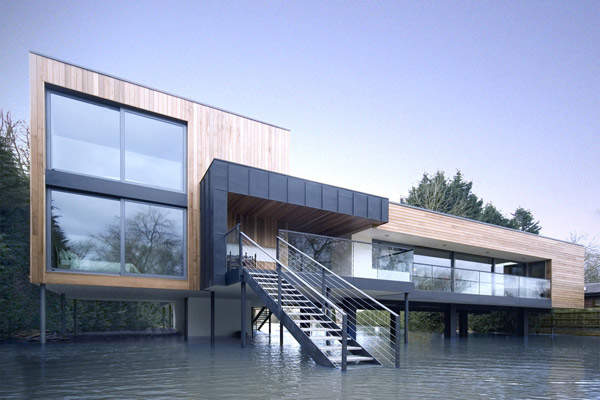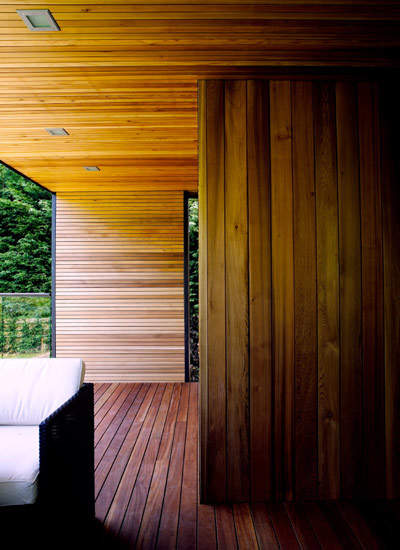Hind House sits on the banks of the River Loddon, near Wargrave in Berkshire, UK.
Henry Goss of John Pardey Architects designed the structure. The structural engineer for the project was London-based Barton Engineers and the main contractor was Wargrave-based Ridgetree Construction. Construction of Hind House began in 2005 and was completed in December 2008.
Hind House was awarded a Royal Institute of British Architects (RIBA) award in May 2009 for architectural excellence for the southern region of the UK.
Hind House design
The design of the house was based on three elements: living, guests and bedrooms. Each element was treated as a distinct zone and separate wings were created in the house. The wings adopt a pinwheel shape resting on columns to combat flooding from the river. Erecting the house on columns was essential as seasonal flooding raised the water level in the river by over a metre. The house is built parallel to the river but towards the lane, entry is from an entrance court.
The house is steel framed, with timber stud infill, cedar and zinc-clad, with aluminium framed windows (frameless glazing to gym area), and single-ply roofing. Elaborate glasswork surrounding the house provides panoramic views of the natural environment outside.
A dark zinc-clad wing is thrust forward to receive a staircase that unfolds into an open timber-lined hood, with a glazed room to the side housing a guest suite that can also be used as a gym.
The stair opens up onto an entrance balcony, and a central hall space – the day room, which is used as outdoor living and extends to a large deck. Tracing the zig-zag path of the pinwheel, a staircase then leads down to a garden deck, with boardwalk on the river’s edge.
On one side is the main element of the house, a long and open living room, built on a cantilevered steel table that also encloses the parking space. The room is cedar clad with a full-height glazed wall leading to the balcony towards the river façade and a projecting oriel on the garden façade. The room is segmented into a kitchen and dining area and also contains a timber storage unit that conceals the study located at the far end of the room.
On the other side of the house, a cubic bedroom block rises up on spindly columns. The bedroom is also cedar clad and contains bathrooms and two bedrooms, and a master bedroom above.
The house is operated by a computerised building management system. The system controls heating demands, lighting, solar control and all the audio-visual installations in the house. The walls, floors and roofs are insulated using sheep’s wool insulation to create a highly energy-efficient home.
Construction
The project was procured under a type of construction management where the client employed a construction manager to work closely with the architect. The client procured (and paid for) all materials and trades directly and the construction manager coordinated all site activities day to day for a set fee. This resulted in greater flexibility and collaboration than would commonly result with a more adversarial traditional procurement route.
The architects encountered several difficulties during the planning phase of the project due to Environment Agency concerns as the site is situated on a functional flood plain. It was awarded permission only after prolonged liaisons with the EA to prove that the proposed design of the house had a mitigating impact on the flood water flow and storage in comparison with the existing dwelling.
Inspiration
The clients wanted to rebuild their brick and tile house, which was originally built in the 1970s. They wanted to set up a system-built house at the site but were discouraged by the cost and inflexibility involved. Inspired by the Attwood House, which was also designed by John Pardey Architects, the clients approached the architects to build a unique living space on the banks of the river.

